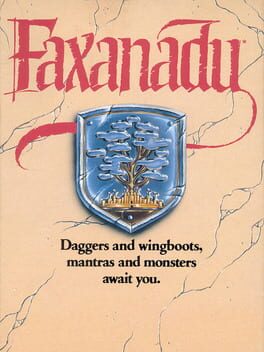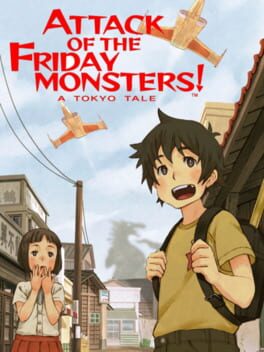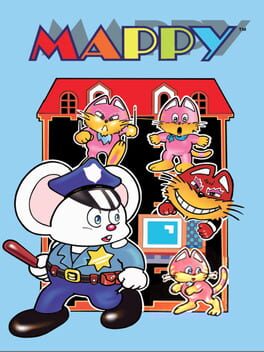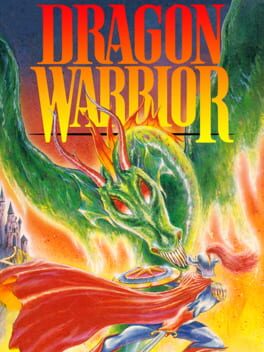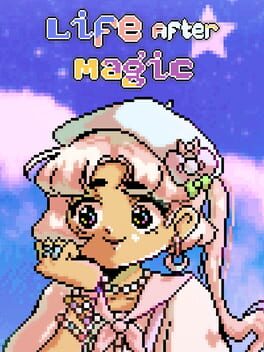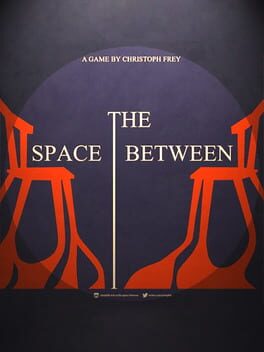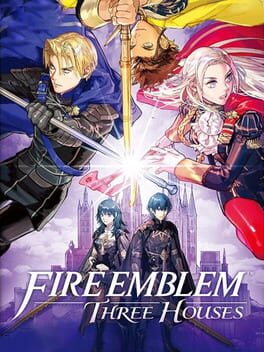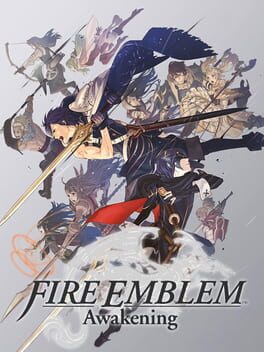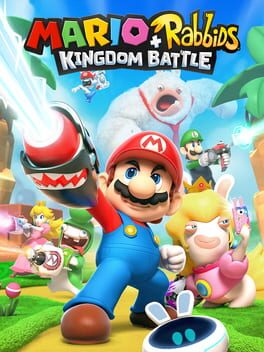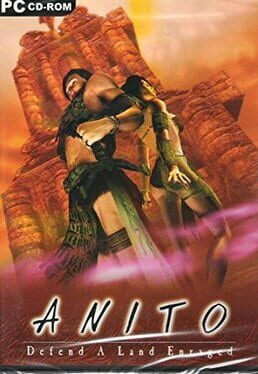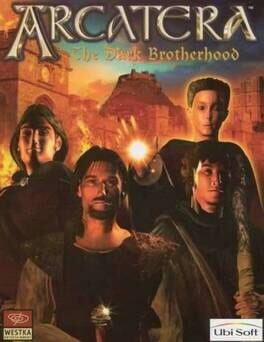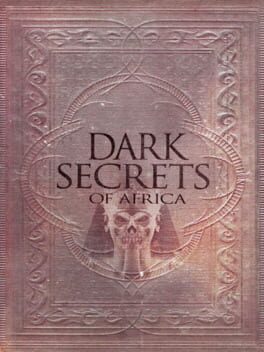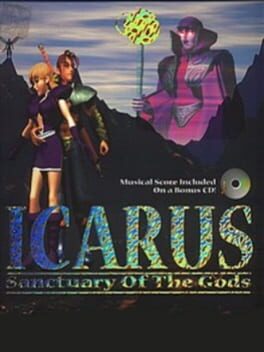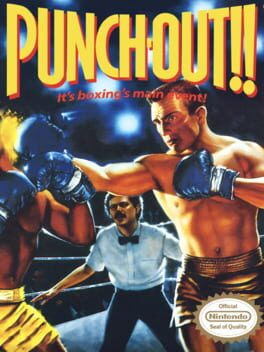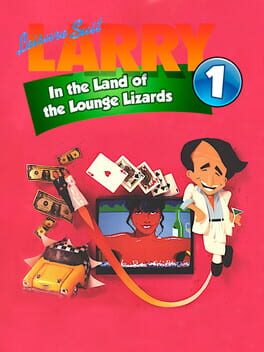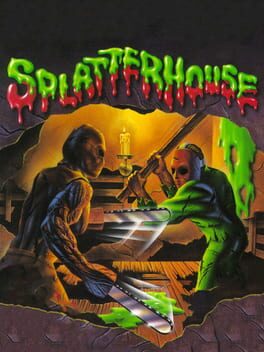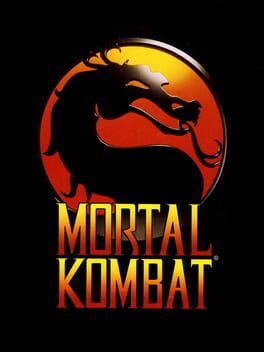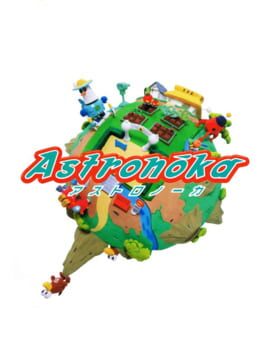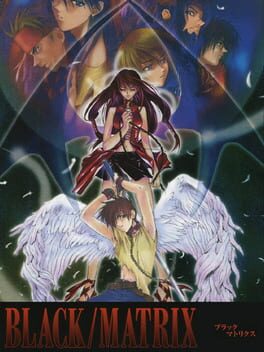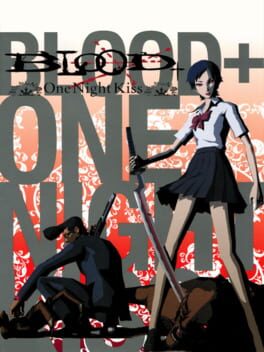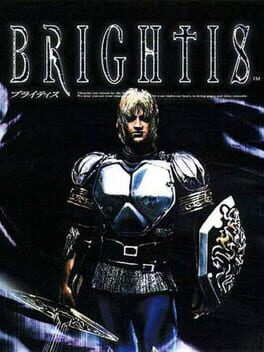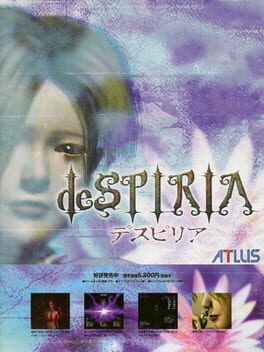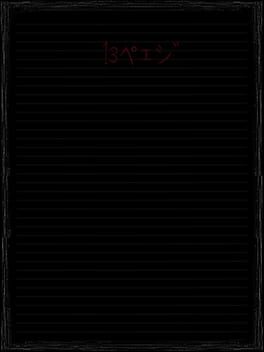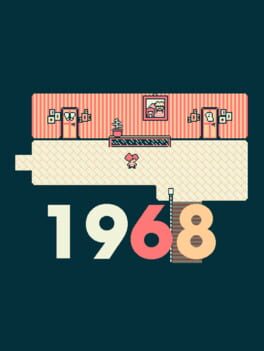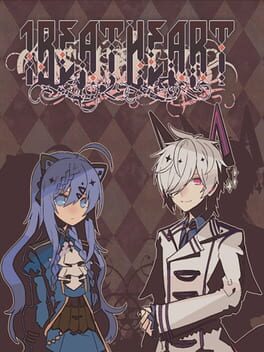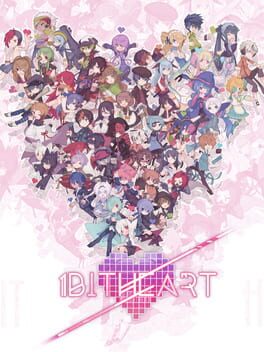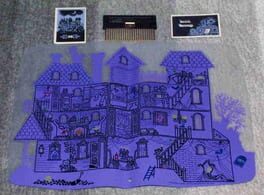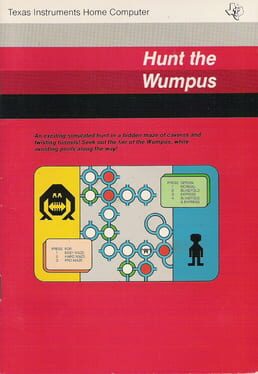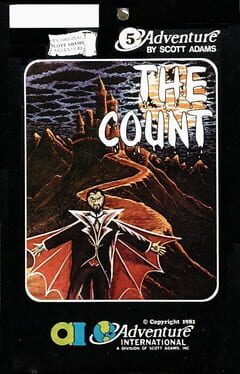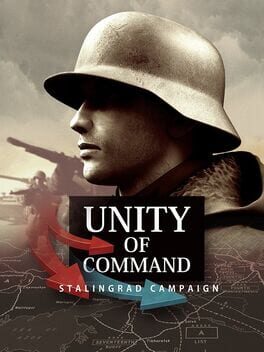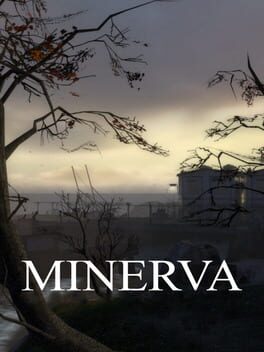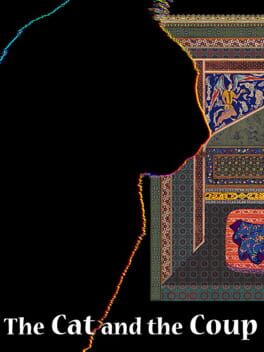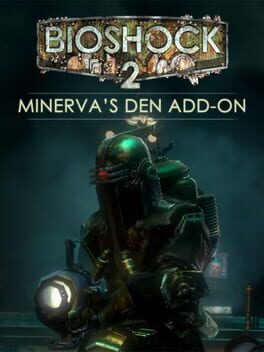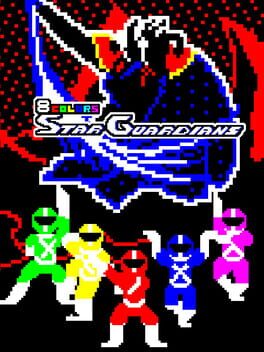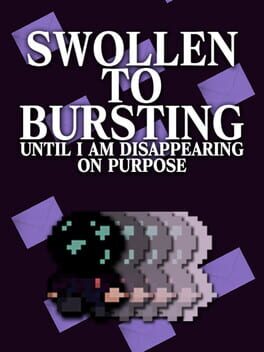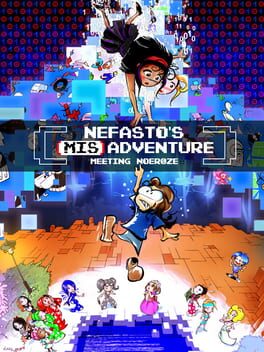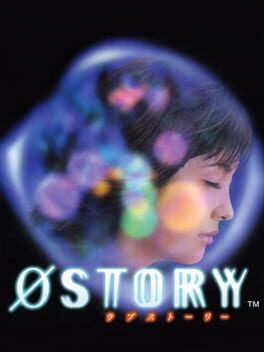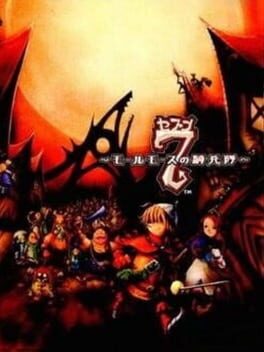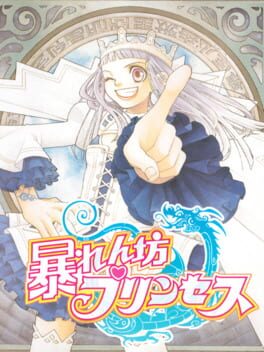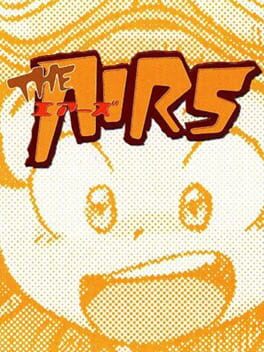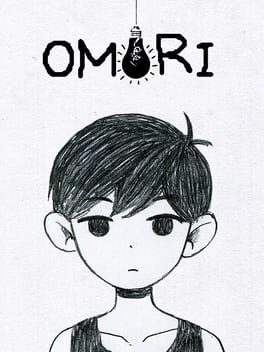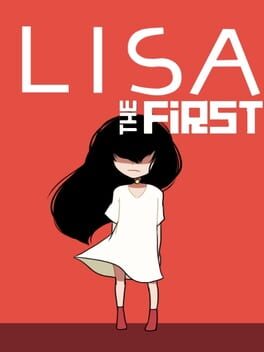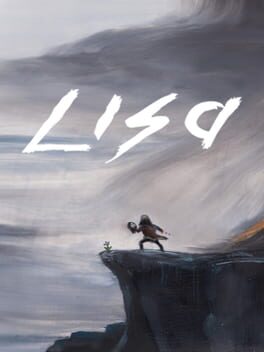14 reviews liked by ToninoMotorino
Faxanadu
1987
[AVGN voice] More like faxing in a doodie! [Cue skit]
Simon's Quest never stood a chance. Zelda II? Just another competitor for the best NES action-RPG of 1987. Xanadu who? That ain't affordable! Why buy a home computer when you can get the [approximate] thrills of computer role-playing action on your TV?! Faxanadu, baby. It's only the lovechild of two of Japan's most lauded developers, seizing the chance to entertain untold numbers of schoolboys with fantasy swashbuckling and dungeoneering like nothing else. Well, maybe that last part's an exaggeration. Maybe this was the best you could get on a cartridge, but any kid lucky enough to own a Famicom Disk System had similar titles well within reach, all iterating on the likes of Xanadu, Zelda, Metroid, and Castlevania.
Poisoned roots flow from the base of World Tree, our hero's old home now corrupted by a cosmic evil. Faxanadu toys with a kind of dark fantasy that had so far evaded the Famicom's library, bewitching its owners with sojourns into caverns, forests, castles, and places that should not be. The people once called Dwarfs now scour this Yggdrasil in mutated forms, and the wise men of the realm wait patiently by desecrated fountains and shrines, hoping for a hero patient and skilled enough to heed their call. While I'm happy to report the game comports itself admirably versus the other ARPGs in the room, its niggling flaws and inability to transcend its inspirations pose a problem for the game today. Nonetheless, it's a testament to how quickly its developers improved at making Famicom exclusives, and one of the breeziest but filling genre exercises that Hudson Soft made for the system.
| "Daggers and wingboots, mantras and monsters await you." |
Famicom Xanadu, as the portmanteau suggests, had a mission to fulfill: bring Nihon Falcom's seminal 1985 PC RPG to the console-bound masses, no matter what it costed Hudson. The two companies knew each other distantly via the Japanese PC games market already, and this collaboration marked the start of a several years' long partnership. Hudson later ported key Falcom titles like Ys I & II and Dragon Slayer: The Legend of Heroes to the former's new console of choice, the PC Engine (CD). Falcom, meanwhile, reaped the crop, collecting hefty residuals from sales of their games on platforms they had no experience with, expertly handled by their partners from Hokkaido. From '87 onward, Falcom made inroads on the far larger console market without having to divert their staff away from the tighter, more competitive J-PC realm, at least until they made their own PC-to-console push in the early '90s.
What we now deem the side-scrolling ARPG had blossomed beyond its niche by '87, thanks to early hits like Namco's Dragon Buster and the diversification shown with cult classics like Layla and Mugen Senshi Valis. Developers tackling the genre sought to meld dungeon crawling, cinematic pacing, and skillful play into something you could play on the simplest of systems. In that sense, '87 was maybe the most important year in ARPG history: Falcom came out swinging with three of the genre's all-time classics (Ys, Sorcerian, and Drasle Family), followed by the likes of Konami (Maze of Gailous, Arumana no Kiseki), Capcom (Black Tiger), Westone (Wonder Boy in Monster Land), Game Arts (Zeliard), and even the NES remake of Rygar. I bring all these up to explain why I've rated Faxanadu roughly in the middle of the pack. There was a lot of competition in the ARPG space at this point in time, and Hudson arguably came in on the back foot.
You'd be right to doubt Hudson's record with console-oriented adventures after the janky results of Challenger, Milon's Secret Castle, Mickey Mousecapade, and arguably the first Adventure Island. The company had triumphed early on with solid renditions of Lode Runner and former J-PC games like Binary Land, but their competitors had leapfrogged them in the art of hours-long Famicom blockbusters. 1987 saw a lot of ups and downs for Hudson's various Famicom teams, with Faxanadu thankfully indicating an end to all but the occasional abject failure. Such a turning point helped double-fold for their upcoming PC Engine projects. Neutopia and Dungeon Explorer, derivative as they are, benefited greatly from the lessons in relatively consistent design that the developer learned this fateful year. I wish we knew who precisely worked on Faxanadu other than musical maestros Jun Chikuma and Toshiaki Takimoto, but good job to everyone else!
The adventure starts off in the main castle town, Eolis, beneath our once verdant World Tree. Despondent residents mill around streets and dim rooms, waiting for relief. The "dwarfs", now resembling creatures from the likes of Alien or Metroid, creep around the town walls, forcing new players to learn the jumping mechanics within the first few minutes. A desperate passer-by hands over their ring, the symbol of Elf kind and one's ticket to an audience with Eolis' king. He tells of a meteorite, crash landed high up within the World Tree, which has poisoned most of the waterways and especially the Dwarf fortress, leading to decay and depression all throughout. After receiving 1500 "golds" and the opportunity to train strength or magic (which just fills those bars, no stat increases here…), players must set off to reactivate the fountains, subdue the Dwarf incursions, and vanquish the evil brought here from outer space.
| "I am free from injury because of the ointment!" |
An immediate strength of Faxanadu is its pacing, with most of the game following a linear progression from below to atop the Tree, foisting small and large challenges upon you with plenty of leniency. The protagonist mainly grows via obtaining new equipment: swords, magic spells, armor, and shields, all buyable or present in corners of the world. Stat progression happens invisibly via changing equipment, while the visible EXP state simply correlates to each title a guru/priest bestows upon you at each temple. This all ties into a robust password save feature, allowing players to recover their progress (ex. equipment, key items, story flags, etc.) and rarely have to retread familiar ground. It took me roughly 7-to-8 hours to clear my first playthrough (not counting fiddling with emulator settings), and maybe an hour of that time involved any notable backtracking.
So, like with Ys and other item-focused ARPGs, there's never much worry about character building, just a well-incentivized goal of getting the best loot (which appears on your guy!) and reaching victory via guile and quick reactions. Controls are mostly well adjusted, both for '87 and compared to the larger Famicom library. Up +/down + A to either use magic or your active item takes some getting used to, but there's little in the way of obscure combat/movement mechanics to complicate things. What I will criticize, however, is the stiff, inconsistent jumping and collision physics. It's admirable of Hudson to test players' ability to time jumps and approach enemies with caution, yet I had way too many close calls where I should have just landed on platforms, only to fall and subsequently retry a section. Regarding enemy hitboxes, these are fine for the most part, but vexing when their attacks bump you back as far as they do. Since Faxanadu is a flip-screen adventure, not a fully scrolling one, this means baddies can and will force you off-screen, prompting extra loading times and enemy respawns which hurt an already precarious balance between affordances for players and the AI alike.
There's way to mitigate getting cornered or too low on health to continue, thankfully, as Faxanadu offers Red Potions, Hourglasses, and other power-ups that let you tank damage, stop time, so on and so forth. Most of the time one should stock up on these at shops in-town, but it's possible to find them out in the wild, either reappearing indefinitely or spawned after defeating a specific set of monsters on the right screen. Better yet, just use magic to avoid risking upfront damage entirely! The spells here evoke their counterparts from Falcom's Xanadu, but are generally simpler, being mostly front-ejecting projectiles and a late-game option which curves and flies upward. Judicious alternation between melee and magic makes the biggest difference in clearing dungeons and traversing the overworld. I would have appreciated more variety in types of weapons, spells, and restoratives on offer, but altogether there's plenty to work with here, especially compared to most Famicom contemporaries.
| "The power of the Hourglass is gone." |
It's by the halfway point—a daredevil trip into the skies, preceding a long and arduous trip through the World Tree's foggy, forlorn trunk full of abandoned sites—that Faxanadu shows its hand, warts and all. This game excels most when rewarding the player's tenacity with a sense of discovery, the feeling of a larger universe than can feasibly be shown. Lengthy hallways inside roots and branches give way to dusty castles possessed by the deranged, where warlocks, monstrosities, and confused soldiers patrol for Elves to slaughter. Each "tower" offers its own set of action, platforming, and item challenges, striving to fully exploit the game's possibility space. I always had a hoot strapping on some Wing Boots, levitating high above foes and hazards (bottomless death pits never appear, thankfully), only to slam right into a miniboss or something cool like that.
See, there's just one (or two, or three) problem(s) with what Faxanadu's, uh, doing here: it rarely if ever captures the tension and complexity of its source material. Xanadu on PC-88 had many flaws of its own, but one couldn't deny the sheer ambition, variety of traps and monsters, and involved leveling + customization Yoshio Kiya and co. managed to squeeze onto those floppies. Here, with limited storage (no Disk System upgrade here!) and a need to accommodate much younger players, Hudson's take on the concept finds itself at an awkward crossroads. The line between regular enemy, miniboss, and boss blurs without confidence. Chikuma's soundtrack, though somewhat catchy and appropriate, struggles to rise above the aural noise reserving sound channels she really needed for her arrangements. A mix of engaging but merely competent platforming and simplistic hack 'n' cast combat makes locations like the Tower of Suffer feel like, erm, suffering. Some truly ill-thought level design comes to mind, too, like mooks patrolling right in front of doors you need to exit and enter (meaning certain death in some scenarios), let alone the lack of unlockable shortcuts or fast travel by late-game.
To further illustrate my reservations, let's look at the keys system, maybe the most belabored aspect of Faxanadu. Many doors throughout the adventure require you to manually equip specific keys (jack, joker, king, queen, and ace) from the inventory, then use them to proceed. Since you can't drop any expendable items at any point, this can lead to accidentally stocking up the wrong type of key, and there's only 8 item slots to work with! So let's say I try selling them off in town, the logical thing to try. It turns out you can only sell specific types to key vendors who already stock them, meaning I'm stuck with early-game items by endgame unless I do way more backtracking than should be necessary. Going in, I honestly thought I'd get more frustrated with the Pendant bug than something like this, but here we are. In terms of which problems are intentional design or just coincidental, I'm unsure where the Pendant's infamous (and seemingly contradictory) damage debuff falls, but Hudson knew what they were doing with keys here. Inventory management, coupled with slow-ass text speeds, can quickly put a damper on one's fun if you aren't careful.
Though Faxanadu is still more intuitive and less guide-dependent than its spiritual predecessor, I find Falcom's game so much more consistent, dedicated to stumping the player while making their accomplishments feel that much more meaningful (and avoiding many aforementioned pitfalls like with keys!). Obtaining better gear and then demolishing them through hitbox cheese is fun, but I wish Hudson could have either added more features to enrich the experience, or taken a bit more time to sand off the edges which remind you this game's trying to evoke Japanese PC RPG jank. For example, where the hell's crouching in this ARPG full of monsters that attack from above and below? Why can't I attack at all on ladders except after getting hit, thus bugging out my hero's sprite and letting me act? With all these omissions and issues working against the player, it's hard not to feel like the latter half of the game becomes a slog. It all starts to feel rushed by the end, especially when fighting the final boss in all its Giger-esque glory. Perhaps the droning, repetitive nature of OG Xanadu is hard to stomach now, yet I find more conviction in that release's design direction than here. Close but no cigar, I feel.
| "Don't have negative thoughts. Remember your mantras." |
I don't hold any production difficulties or inexperience against Hudson staff, despite my hangups, and Faxanadu accomplishes more than it's often given credit. One's moxie in battle and exploration often leads to hidden rewards, or the satisfaction of clobbering bad guys before they ever get the chance to react. Minibosses show up frequently as the story progresses, with each posing a unique problem to solve (will I jump over fireballs or block them with my shield? or how about pinning these jumping eldritch things against the wall to not dodge all the time?). While it can be tedious to backtrack all the way to the beginning or grind for a big wallet early on, doing so grants access to a couple of the best items in the game, rewarding anyone who takes their time to learn the game ASAP and preserve one's life long enough.
Hudson seemed to have a knack for immediately following poor design choices with smart ones; one screen filled with hard-to-hit ranged attackers can just as quickly lead to another with health-dropping fodder! I find Faxanadu pleasantly accessible for an ARPG of its vintage despite the pendulum swinging from quite (sometimes) very good sequences to weak ones. Hit feedback's always satisfying, as is the crunchy but legible audiovisual design. Having just eight items means, in an ideal run, you can stock a bevy of potions and powerful items to seize the advantage, especially when fighting those damn flying bees or disabling bigger guys' means of claiming space. At its best, the game makes you feel empowered through both well-paced encounters and some of the more satisfyingly cheesy strategies one can pull off in an ARPG. Figuring out simply where to go and what to do is also a highlight, thanks to nicely written NPCs throughout the realm giving you hints and clearly delineating questlines.
However, Faxanadu's most convincing strengths lie in the atmospheres it evokes, defying the Famicom's limitations to create something rarely matched in 8-bit xRPGs. Simply put, it looks incredible for an '87 console game. Tile upon tile of ornate details, greebles, and textures found both in pixels and CRT blurs combine to illustrate an otherwise fairly generic world in greater depth. Florid passages transition into harsh fortresses, then heading into the Tree's ethereal insides, without ever feeling thrown together. This game does much better at capturing the interminable, oppressive sadness and claustrophobia of Falcom's Xanadu while providing real variety in environments. (I wish each town looked more unique after Eolis, but I doubt they had enough memory to achieve that.) By the game's finale, I felt that creeping dread on my back which the best gothic adventures provide, somehow captured within the confines of Hudson's simple premise and handiwork.
In a year of superlative action role-playing titans, Faxanadu takes a pratfall or two, desperate to keep up, and I can't help but admire it.
Simon's Quest never stood a chance. Zelda II? Just another competitor for the best NES action-RPG of 1987. Xanadu who? That ain't affordable! Why buy a home computer when you can get the [approximate] thrills of computer role-playing action on your TV?! Faxanadu, baby. It's only the lovechild of two of Japan's most lauded developers, seizing the chance to entertain untold numbers of schoolboys with fantasy swashbuckling and dungeoneering like nothing else. Well, maybe that last part's an exaggeration. Maybe this was the best you could get on a cartridge, but any kid lucky enough to own a Famicom Disk System had similar titles well within reach, all iterating on the likes of Xanadu, Zelda, Metroid, and Castlevania.
Poisoned roots flow from the base of World Tree, our hero's old home now corrupted by a cosmic evil. Faxanadu toys with a kind of dark fantasy that had so far evaded the Famicom's library, bewitching its owners with sojourns into caverns, forests, castles, and places that should not be. The people once called Dwarfs now scour this Yggdrasil in mutated forms, and the wise men of the realm wait patiently by desecrated fountains and shrines, hoping for a hero patient and skilled enough to heed their call. While I'm happy to report the game comports itself admirably versus the other ARPGs in the room, its niggling flaws and inability to transcend its inspirations pose a problem for the game today. Nonetheless, it's a testament to how quickly its developers improved at making Famicom exclusives, and one of the breeziest but filling genre exercises that Hudson Soft made for the system.
| "Daggers and wingboots, mantras and monsters await you." |
Famicom Xanadu, as the portmanteau suggests, had a mission to fulfill: bring Nihon Falcom's seminal 1985 PC RPG to the console-bound masses, no matter what it costed Hudson. The two companies knew each other distantly via the Japanese PC games market already, and this collaboration marked the start of a several years' long partnership. Hudson later ported key Falcom titles like Ys I & II and Dragon Slayer: The Legend of Heroes to the former's new console of choice, the PC Engine (CD). Falcom, meanwhile, reaped the crop, collecting hefty residuals from sales of their games on platforms they had no experience with, expertly handled by their partners from Hokkaido. From '87 onward, Falcom made inroads on the far larger console market without having to divert their staff away from the tighter, more competitive J-PC realm, at least until they made their own PC-to-console push in the early '90s.
What we now deem the side-scrolling ARPG had blossomed beyond its niche by '87, thanks to early hits like Namco's Dragon Buster and the diversification shown with cult classics like Layla and Mugen Senshi Valis. Developers tackling the genre sought to meld dungeon crawling, cinematic pacing, and skillful play into something you could play on the simplest of systems. In that sense, '87 was maybe the most important year in ARPG history: Falcom came out swinging with three of the genre's all-time classics (Ys, Sorcerian, and Drasle Family), followed by the likes of Konami (Maze of Gailous, Arumana no Kiseki), Capcom (Black Tiger), Westone (Wonder Boy in Monster Land), Game Arts (Zeliard), and even the NES remake of Rygar. I bring all these up to explain why I've rated Faxanadu roughly in the middle of the pack. There was a lot of competition in the ARPG space at this point in time, and Hudson arguably came in on the back foot.
You'd be right to doubt Hudson's record with console-oriented adventures after the janky results of Challenger, Milon's Secret Castle, Mickey Mousecapade, and arguably the first Adventure Island. The company had triumphed early on with solid renditions of Lode Runner and former J-PC games like Binary Land, but their competitors had leapfrogged them in the art of hours-long Famicom blockbusters. 1987 saw a lot of ups and downs for Hudson's various Famicom teams, with Faxanadu thankfully indicating an end to all but the occasional abject failure. Such a turning point helped double-fold for their upcoming PC Engine projects. Neutopia and Dungeon Explorer, derivative as they are, benefited greatly from the lessons in relatively consistent design that the developer learned this fateful year. I wish we knew who precisely worked on Faxanadu other than musical maestros Jun Chikuma and Toshiaki Takimoto, but good job to everyone else!
The adventure starts off in the main castle town, Eolis, beneath our once verdant World Tree. Despondent residents mill around streets and dim rooms, waiting for relief. The "dwarfs", now resembling creatures from the likes of Alien or Metroid, creep around the town walls, forcing new players to learn the jumping mechanics within the first few minutes. A desperate passer-by hands over their ring, the symbol of Elf kind and one's ticket to an audience with Eolis' king. He tells of a meteorite, crash landed high up within the World Tree, which has poisoned most of the waterways and especially the Dwarf fortress, leading to decay and depression all throughout. After receiving 1500 "golds" and the opportunity to train strength or magic (which just fills those bars, no stat increases here…), players must set off to reactivate the fountains, subdue the Dwarf incursions, and vanquish the evil brought here from outer space.
| "I am free from injury because of the ointment!" |
An immediate strength of Faxanadu is its pacing, with most of the game following a linear progression from below to atop the Tree, foisting small and large challenges upon you with plenty of leniency. The protagonist mainly grows via obtaining new equipment: swords, magic spells, armor, and shields, all buyable or present in corners of the world. Stat progression happens invisibly via changing equipment, while the visible EXP state simply correlates to each title a guru/priest bestows upon you at each temple. This all ties into a robust password save feature, allowing players to recover their progress (ex. equipment, key items, story flags, etc.) and rarely have to retread familiar ground. It took me roughly 7-to-8 hours to clear my first playthrough (not counting fiddling with emulator settings), and maybe an hour of that time involved any notable backtracking.
So, like with Ys and other item-focused ARPGs, there's never much worry about character building, just a well-incentivized goal of getting the best loot (which appears on your guy!) and reaching victory via guile and quick reactions. Controls are mostly well adjusted, both for '87 and compared to the larger Famicom library. Up +/down + A to either use magic or your active item takes some getting used to, but there's little in the way of obscure combat/movement mechanics to complicate things. What I will criticize, however, is the stiff, inconsistent jumping and collision physics. It's admirable of Hudson to test players' ability to time jumps and approach enemies with caution, yet I had way too many close calls where I should have just landed on platforms, only to fall and subsequently retry a section. Regarding enemy hitboxes, these are fine for the most part, but vexing when their attacks bump you back as far as they do. Since Faxanadu is a flip-screen adventure, not a fully scrolling one, this means baddies can and will force you off-screen, prompting extra loading times and enemy respawns which hurt an already precarious balance between affordances for players and the AI alike.
There's way to mitigate getting cornered or too low on health to continue, thankfully, as Faxanadu offers Red Potions, Hourglasses, and other power-ups that let you tank damage, stop time, so on and so forth. Most of the time one should stock up on these at shops in-town, but it's possible to find them out in the wild, either reappearing indefinitely or spawned after defeating a specific set of monsters on the right screen. Better yet, just use magic to avoid risking upfront damage entirely! The spells here evoke their counterparts from Falcom's Xanadu, but are generally simpler, being mostly front-ejecting projectiles and a late-game option which curves and flies upward. Judicious alternation between melee and magic makes the biggest difference in clearing dungeons and traversing the overworld. I would have appreciated more variety in types of weapons, spells, and restoratives on offer, but altogether there's plenty to work with here, especially compared to most Famicom contemporaries.
| "The power of the Hourglass is gone." |
It's by the halfway point—a daredevil trip into the skies, preceding a long and arduous trip through the World Tree's foggy, forlorn trunk full of abandoned sites—that Faxanadu shows its hand, warts and all. This game excels most when rewarding the player's tenacity with a sense of discovery, the feeling of a larger universe than can feasibly be shown. Lengthy hallways inside roots and branches give way to dusty castles possessed by the deranged, where warlocks, monstrosities, and confused soldiers patrol for Elves to slaughter. Each "tower" offers its own set of action, platforming, and item challenges, striving to fully exploit the game's possibility space. I always had a hoot strapping on some Wing Boots, levitating high above foes and hazards (bottomless death pits never appear, thankfully), only to slam right into a miniboss or something cool like that.
See, there's just one (or two, or three) problem(s) with what Faxanadu's, uh, doing here: it rarely if ever captures the tension and complexity of its source material. Xanadu on PC-88 had many flaws of its own, but one couldn't deny the sheer ambition, variety of traps and monsters, and involved leveling + customization Yoshio Kiya and co. managed to squeeze onto those floppies. Here, with limited storage (no Disk System upgrade here!) and a need to accommodate much younger players, Hudson's take on the concept finds itself at an awkward crossroads. The line between regular enemy, miniboss, and boss blurs without confidence. Chikuma's soundtrack, though somewhat catchy and appropriate, struggles to rise above the aural noise reserving sound channels she really needed for her arrangements. A mix of engaging but merely competent platforming and simplistic hack 'n' cast combat makes locations like the Tower of Suffer feel like, erm, suffering. Some truly ill-thought level design comes to mind, too, like mooks patrolling right in front of doors you need to exit and enter (meaning certain death in some scenarios), let alone the lack of unlockable shortcuts or fast travel by late-game.
To further illustrate my reservations, let's look at the keys system, maybe the most belabored aspect of Faxanadu. Many doors throughout the adventure require you to manually equip specific keys (jack, joker, king, queen, and ace) from the inventory, then use them to proceed. Since you can't drop any expendable items at any point, this can lead to accidentally stocking up the wrong type of key, and there's only 8 item slots to work with! So let's say I try selling them off in town, the logical thing to try. It turns out you can only sell specific types to key vendors who already stock them, meaning I'm stuck with early-game items by endgame unless I do way more backtracking than should be necessary. Going in, I honestly thought I'd get more frustrated with the Pendant bug than something like this, but here we are. In terms of which problems are intentional design or just coincidental, I'm unsure where the Pendant's infamous (and seemingly contradictory) damage debuff falls, but Hudson knew what they were doing with keys here. Inventory management, coupled with slow-ass text speeds, can quickly put a damper on one's fun if you aren't careful.
Though Faxanadu is still more intuitive and less guide-dependent than its spiritual predecessor, I find Falcom's game so much more consistent, dedicated to stumping the player while making their accomplishments feel that much more meaningful (and avoiding many aforementioned pitfalls like with keys!). Obtaining better gear and then demolishing them through hitbox cheese is fun, but I wish Hudson could have either added more features to enrich the experience, or taken a bit more time to sand off the edges which remind you this game's trying to evoke Japanese PC RPG jank. For example, where the hell's crouching in this ARPG full of monsters that attack from above and below? Why can't I attack at all on ladders except after getting hit, thus bugging out my hero's sprite and letting me act? With all these omissions and issues working against the player, it's hard not to feel like the latter half of the game becomes a slog. It all starts to feel rushed by the end, especially when fighting the final boss in all its Giger-esque glory. Perhaps the droning, repetitive nature of OG Xanadu is hard to stomach now, yet I find more conviction in that release's design direction than here. Close but no cigar, I feel.
| "Don't have negative thoughts. Remember your mantras." |
I don't hold any production difficulties or inexperience against Hudson staff, despite my hangups, and Faxanadu accomplishes more than it's often given credit. One's moxie in battle and exploration often leads to hidden rewards, or the satisfaction of clobbering bad guys before they ever get the chance to react. Minibosses show up frequently as the story progresses, with each posing a unique problem to solve (will I jump over fireballs or block them with my shield? or how about pinning these jumping eldritch things against the wall to not dodge all the time?). While it can be tedious to backtrack all the way to the beginning or grind for a big wallet early on, doing so grants access to a couple of the best items in the game, rewarding anyone who takes their time to learn the game ASAP and preserve one's life long enough.
Hudson seemed to have a knack for immediately following poor design choices with smart ones; one screen filled with hard-to-hit ranged attackers can just as quickly lead to another with health-dropping fodder! I find Faxanadu pleasantly accessible for an ARPG of its vintage despite the pendulum swinging from quite (sometimes) very good sequences to weak ones. Hit feedback's always satisfying, as is the crunchy but legible audiovisual design. Having just eight items means, in an ideal run, you can stock a bevy of potions and powerful items to seize the advantage, especially when fighting those damn flying bees or disabling bigger guys' means of claiming space. At its best, the game makes you feel empowered through both well-paced encounters and some of the more satisfyingly cheesy strategies one can pull off in an ARPG. Figuring out simply where to go and what to do is also a highlight, thanks to nicely written NPCs throughout the realm giving you hints and clearly delineating questlines.
However, Faxanadu's most convincing strengths lie in the atmospheres it evokes, defying the Famicom's limitations to create something rarely matched in 8-bit xRPGs. Simply put, it looks incredible for an '87 console game. Tile upon tile of ornate details, greebles, and textures found both in pixels and CRT blurs combine to illustrate an otherwise fairly generic world in greater depth. Florid passages transition into harsh fortresses, then heading into the Tree's ethereal insides, without ever feeling thrown together. This game does much better at capturing the interminable, oppressive sadness and claustrophobia of Falcom's Xanadu while providing real variety in environments. (I wish each town looked more unique after Eolis, but I doubt they had enough memory to achieve that.) By the game's finale, I felt that creeping dread on my back which the best gothic adventures provide, somehow captured within the confines of Hudson's simple premise and handiwork.
In a year of superlative action role-playing titans, Faxanadu takes a pratfall or two, desperate to keep up, and I can't help but admire it.
「電柱に登りて工夫蝉となる。」
'Up on the hydro pole
the electrician turns
into a cicada.'
– Mitsuhashi Takajo (1899-1972), in Makoto Ueda (ed.), Far Beyond the Field, 2003.
Played during the Backloggd’s Game of the Week (Feb. 28 – Mar. 6, 2023).
In the 1960s, Japan experienced very strong economic growth, which translated into rapid modernisation. As the showcase of Japanese urbanisation for the world to see since the 1964 Tokyo Olympics, the city was driven into an intense building spree to keep up with the population pressure that was bursting the city centre. Even with the countless buildings constructed, demand was so overwhelming that the population eventually moved to the suburbs, where anarchic housing projects were launched. By 31st December 1968, the Setagaya district had 1,450,000 square metres of floor in reinforced concrete or steel-framed buildings [1]. One can imagine that the buildings were piling up in chaos: a first urbanisation plan had been proposed in 1956 to enclose the western part of Tokyo Bay – i.e. the Tokyo-Kawasaki-Yokohama metropolis – with green spaces and to build a residential ring beyond, but the authorities were largely overwhelmed and it was not until 1965 that the urbanisation plan for Greater Tokyo was actually adopted.
Depicting the Japanese suburban modernisation
Setagaya, the special ward bordering the Tama River in which the game takes place, was built out of necessity as a 'garden suburb', meaning a predominantly residential area with largely privatised land and considerable influence from private railway companies. Unlike the garden cities of the late 1970s, this first wave was still inchoate, with frictions between productive spaces, factories and former housing. Kaijū ga Deru Kinyōbi is set precisely in 1971, at a moment that reveals how two different worlds interact on the cusp of forced urbanisation. The subtitle 'A Tokyo Tale', as usual in Kaz Ayabe's games, invites players to reflect on these historical elements, which give the game a special identity.
The player takes on the role of Sohta, a young boy who has just moved with his family to the Fuji no Hana neighbourhood – which means 'wisteria', a symbol of love. His parents run a dry-cleaning shop, and the first few seconds show a pre-1970s way of life, with old houses that double as shops and homes. Washing machines are stacked behind the front door, while the living room is hidden behind a thin partition. The discussion between Sohta and his parents quickly turns to Friday's Kaijus, both those on TV and those in reality. By exploring the town and talking to the NPCs, the player soon realises that this still green and unindustrialised area has been chosen by a TV studio as a location for their tokusatsu. It is obvious that the various children have not yet rationalised what a film set is and believe that monsters really exist.
In the early 1970s, although television was no longer new, access was still relatively limited. Some places had no reception, and it was not until the 1980s that cable became widely available in major cities. Setagaya is equipped, however, which is an argument for the children to be happy to live there, as they can watch their series every Friday. Kaijū ga Deru Kinyōbi captures aspects of everyday life through the eyes of children. Industrialisation is recontextualised as a great unknown, with smoke from distant factories looking like monsters. The train line running along Fuji no Hana marks the time of day with its noises and delineates the territory for the children to explore. A photograph from 1968 gives an idea of how these areas were organised and explains how an entire generation embraced the idea of the train as a sign of tranquillity, before the small peripheral tram lines disappeared. As a sign that the game evokes a bygone era, Sohta learns from Officer Kobayashi that Fuji no Hana is punctuated by railway strikes, forcing workers to walk along the lines to get to their jobs closer to central Tokyo. The routine nature of these social movements does not lead to explicit political commentary in the game, but shows that they were a normal part of Japanese life. Far from the current situation where workers no longer dare to protest, in the 1960s and 1970s there were still several thousand protests a year.
Dreaming of a lost solidarity
In Ayabe's words, Kaijū ga Deru Kinyōbi should convey an 'admiration for the era itself and the people who lived in it, rather than a longing for the art form of the era', in particular 'their caring nature and the diligence and drive that helped Japan grow into the second largest economy in the world' [2]. Ayabe's point of view is obviously ideologically situated. Born in 1965, he grew up on the cusp of two very different eras and has a strong nostalgia for Kaettekita Urutoraman (1971-1972), the first television series he remembers. The design of Fuji no Hana thus follows these themes, exploring both the sincerity of the inhabitants of a small, close-knit community and the modernity translated into a new form of entertainment. This ambivalence helps to make Kaijū ga Deru Kinyōbi a story of growth, both from a personal and a communal perspective. As Sohta searches out answers to his questions, his adventure in Fuji no Hana is an excuse for the player to see other characters grow up. The other children try to overcome their fears and doubts, while the adults work to communicate better with each other or to fulfil their forgotten dreams so as not to live with regrets.
This emphasis on creating an idyllic community is a reaction to the gradual disappearance of solidarity in recent decades. While garden cities were originally conceived as convenient residential areas for the middle – or even working – class, in practice they have been gentrified and are now the most expensive areas in Japan. A textbook example is Den-en-chōfu in western Tokyo. The massive increase in the price of a square metre in the 1980s (over 2,500,000 yen per square metre) led to a fragmentation of property ownership, an ageing population and a transformation of the urban landscape with a withdrawal of the individual. The hedges that were the typical symbol of the neighbourhood have been replaced by large walls equipped with security cameras. [3] In contrast, Kaijū ga Deru Kinyōbi openly encourages proximity between neighbours. Houses are built next to each other, and the streets are almost like shared courtyards. While the alleys are still unpaved, signs of modernity can be seen here and there: the buildings are composite, half concrete and half wood, while the main artery is well renovated, suitable for the new cars that are appearing in the neighbourhood. New ways of working are also emerging: one of Billboard's father's clients is a supermarket, which forces him to work both day and night.
The childlike and healing charm of tokusatsu
But these elements are not read as fatal by the various characters. Television and the kaiju series are portrayed as a source of dreams and hope, and provide life goals for each member of the Fuji no Hana community. The children learn the values of justice, while Megumi, the director, understands that inspiring such emotions in them is also a beautiful experience. The hierarchy imposed by the rules of the card game is a social contract that the children accept wholeheartedly, taking turns to be the master or servant of another, as luck would have it. The only caveat is the obligation to fall to the ground when a master casts a spell on their servant: Kaijū ga Deru Kinyōbi operates a translation of adult relationships into the world of children, attributing a positive valence to pacified relations between communicating neighbours, rather than gifts and counter-gifts involving class dynamics. Writers have as much merit as manual workers in a framework where solidarity prevails.
The emphasis on communication is found throughout the adventure, both in the characters' stories – such as Emiko getting closer to her father by explaining her marriage plans – and in the fact that the adults play along and do not stifle the children's resourceful imaginations. LordDarias mentioned elements of magical realism in some scenes, and I agree. While an adult's eye can immediately understand what is going on, there are some parts that remain unexplained, especially towards the end of the game, where nothing helps to clarify why Sohta ended up in the restaurant. But as with all works based on magical realism, the answer is of little importance. The interest lies in the message conveyed and the magic of the occasion itself. To cherish and preserve that is the strength of the game and of this small community. Similarly, there is a lovely form of communication in the post-game, where Sohta can talk to the various characters, moving from one topic to another. This sequence, which allows the player to gather knowledge from each NPC, is very similar to the exchange quests of the Zelda games, but with information instead of items. The conversations shed a little more light on each character's motivations and provide an elegant conclusion to Sohta's Saturday.
Admittedly, the card game is quite decontextualised from the rest of the narrative, and even feels disconnected from the exploration system – the player must collect small, shiny glims all over Fuji no Hana to mysteriously create playing cards – but that hardly matters. Kaijū ga Deru Kinyōbi is a brief dive into a vanished Japan, partially mythologised through Kez Ayabe's childhood memories. While the game depicts a blessed time that warrants further nuance from other experiences of everyday Japanese life, its candour and desire to portray a supportive community is endearing. Like the rest of Millennium Kitchen's works, the title is part of the iyashikei trend: for a three-hour experience, it accomplishes its purpose perfectly.
__________
[1] François Doumenge, ‘L'urbanisation et l'aménagement de l'espace au Japon’, in Les Cahiers d’outre-mer, no. 22-88, 1969, pp. 369-371.
[2] Andrew Vestal, ‘Interview: Kaz Ayabe & Attack of the Friday Monsters!’, on Gaming Intelligence Agency, 20th August 2013, consulted on 1st March 2023.
[3] Tomoko Kubo, Raphaël Languillon-Aussel, ‘Les cités-jardins au Japon : entre urbanisme occidental et hybridation locale’, on Géoconfluences, 30th June 2017, consulted on 1st March 2023.
'Up on the hydro pole
the electrician turns
into a cicada.'
– Mitsuhashi Takajo (1899-1972), in Makoto Ueda (ed.), Far Beyond the Field, 2003.
Played during the Backloggd’s Game of the Week (Feb. 28 – Mar. 6, 2023).
In the 1960s, Japan experienced very strong economic growth, which translated into rapid modernisation. As the showcase of Japanese urbanisation for the world to see since the 1964 Tokyo Olympics, the city was driven into an intense building spree to keep up with the population pressure that was bursting the city centre. Even with the countless buildings constructed, demand was so overwhelming that the population eventually moved to the suburbs, where anarchic housing projects were launched. By 31st December 1968, the Setagaya district had 1,450,000 square metres of floor in reinforced concrete or steel-framed buildings [1]. One can imagine that the buildings were piling up in chaos: a first urbanisation plan had been proposed in 1956 to enclose the western part of Tokyo Bay – i.e. the Tokyo-Kawasaki-Yokohama metropolis – with green spaces and to build a residential ring beyond, but the authorities were largely overwhelmed and it was not until 1965 that the urbanisation plan for Greater Tokyo was actually adopted.
Depicting the Japanese suburban modernisation
Setagaya, the special ward bordering the Tama River in which the game takes place, was built out of necessity as a 'garden suburb', meaning a predominantly residential area with largely privatised land and considerable influence from private railway companies. Unlike the garden cities of the late 1970s, this first wave was still inchoate, with frictions between productive spaces, factories and former housing. Kaijū ga Deru Kinyōbi is set precisely in 1971, at a moment that reveals how two different worlds interact on the cusp of forced urbanisation. The subtitle 'A Tokyo Tale', as usual in Kaz Ayabe's games, invites players to reflect on these historical elements, which give the game a special identity.
The player takes on the role of Sohta, a young boy who has just moved with his family to the Fuji no Hana neighbourhood – which means 'wisteria', a symbol of love. His parents run a dry-cleaning shop, and the first few seconds show a pre-1970s way of life, with old houses that double as shops and homes. Washing machines are stacked behind the front door, while the living room is hidden behind a thin partition. The discussion between Sohta and his parents quickly turns to Friday's Kaijus, both those on TV and those in reality. By exploring the town and talking to the NPCs, the player soon realises that this still green and unindustrialised area has been chosen by a TV studio as a location for their tokusatsu. It is obvious that the various children have not yet rationalised what a film set is and believe that monsters really exist.
In the early 1970s, although television was no longer new, access was still relatively limited. Some places had no reception, and it was not until the 1980s that cable became widely available in major cities. Setagaya is equipped, however, which is an argument for the children to be happy to live there, as they can watch their series every Friday. Kaijū ga Deru Kinyōbi captures aspects of everyday life through the eyes of children. Industrialisation is recontextualised as a great unknown, with smoke from distant factories looking like monsters. The train line running along Fuji no Hana marks the time of day with its noises and delineates the territory for the children to explore. A photograph from 1968 gives an idea of how these areas were organised and explains how an entire generation embraced the idea of the train as a sign of tranquillity, before the small peripheral tram lines disappeared. As a sign that the game evokes a bygone era, Sohta learns from Officer Kobayashi that Fuji no Hana is punctuated by railway strikes, forcing workers to walk along the lines to get to their jobs closer to central Tokyo. The routine nature of these social movements does not lead to explicit political commentary in the game, but shows that they were a normal part of Japanese life. Far from the current situation where workers no longer dare to protest, in the 1960s and 1970s there were still several thousand protests a year.
Dreaming of a lost solidarity
In Ayabe's words, Kaijū ga Deru Kinyōbi should convey an 'admiration for the era itself and the people who lived in it, rather than a longing for the art form of the era', in particular 'their caring nature and the diligence and drive that helped Japan grow into the second largest economy in the world' [2]. Ayabe's point of view is obviously ideologically situated. Born in 1965, he grew up on the cusp of two very different eras and has a strong nostalgia for Kaettekita Urutoraman (1971-1972), the first television series he remembers. The design of Fuji no Hana thus follows these themes, exploring both the sincerity of the inhabitants of a small, close-knit community and the modernity translated into a new form of entertainment. This ambivalence helps to make Kaijū ga Deru Kinyōbi a story of growth, both from a personal and a communal perspective. As Sohta searches out answers to his questions, his adventure in Fuji no Hana is an excuse for the player to see other characters grow up. The other children try to overcome their fears and doubts, while the adults work to communicate better with each other or to fulfil their forgotten dreams so as not to live with regrets.
This emphasis on creating an idyllic community is a reaction to the gradual disappearance of solidarity in recent decades. While garden cities were originally conceived as convenient residential areas for the middle – or even working – class, in practice they have been gentrified and are now the most expensive areas in Japan. A textbook example is Den-en-chōfu in western Tokyo. The massive increase in the price of a square metre in the 1980s (over 2,500,000 yen per square metre) led to a fragmentation of property ownership, an ageing population and a transformation of the urban landscape with a withdrawal of the individual. The hedges that were the typical symbol of the neighbourhood have been replaced by large walls equipped with security cameras. [3] In contrast, Kaijū ga Deru Kinyōbi openly encourages proximity between neighbours. Houses are built next to each other, and the streets are almost like shared courtyards. While the alleys are still unpaved, signs of modernity can be seen here and there: the buildings are composite, half concrete and half wood, while the main artery is well renovated, suitable for the new cars that are appearing in the neighbourhood. New ways of working are also emerging: one of Billboard's father's clients is a supermarket, which forces him to work both day and night.
The childlike and healing charm of tokusatsu
But these elements are not read as fatal by the various characters. Television and the kaiju series are portrayed as a source of dreams and hope, and provide life goals for each member of the Fuji no Hana community. The children learn the values of justice, while Megumi, the director, understands that inspiring such emotions in them is also a beautiful experience. The hierarchy imposed by the rules of the card game is a social contract that the children accept wholeheartedly, taking turns to be the master or servant of another, as luck would have it. The only caveat is the obligation to fall to the ground when a master casts a spell on their servant: Kaijū ga Deru Kinyōbi operates a translation of adult relationships into the world of children, attributing a positive valence to pacified relations between communicating neighbours, rather than gifts and counter-gifts involving class dynamics. Writers have as much merit as manual workers in a framework where solidarity prevails.
The emphasis on communication is found throughout the adventure, both in the characters' stories – such as Emiko getting closer to her father by explaining her marriage plans – and in the fact that the adults play along and do not stifle the children's resourceful imaginations. LordDarias mentioned elements of magical realism in some scenes, and I agree. While an adult's eye can immediately understand what is going on, there are some parts that remain unexplained, especially towards the end of the game, where nothing helps to clarify why Sohta ended up in the restaurant. But as with all works based on magical realism, the answer is of little importance. The interest lies in the message conveyed and the magic of the occasion itself. To cherish and preserve that is the strength of the game and of this small community. Similarly, there is a lovely form of communication in the post-game, where Sohta can talk to the various characters, moving from one topic to another. This sequence, which allows the player to gather knowledge from each NPC, is very similar to the exchange quests of the Zelda games, but with information instead of items. The conversations shed a little more light on each character's motivations and provide an elegant conclusion to Sohta's Saturday.
Admittedly, the card game is quite decontextualised from the rest of the narrative, and even feels disconnected from the exploration system – the player must collect small, shiny glims all over Fuji no Hana to mysteriously create playing cards – but that hardly matters. Kaijū ga Deru Kinyōbi is a brief dive into a vanished Japan, partially mythologised through Kez Ayabe's childhood memories. While the game depicts a blessed time that warrants further nuance from other experiences of everyday Japanese life, its candour and desire to portray a supportive community is endearing. Like the rest of Millennium Kitchen's works, the title is part of the iyashikei trend: for a three-hour experience, it accomplishes its purpose perfectly.
__________
[1] François Doumenge, ‘L'urbanisation et l'aménagement de l'espace au Japon’, in Les Cahiers d’outre-mer, no. 22-88, 1969, pp. 369-371.
[2] Andrew Vestal, ‘Interview: Kaz Ayabe & Attack of the Friday Monsters!’, on Gaming Intelligence Agency, 20th August 2013, consulted on 1st March 2023.
[3] Tomoko Kubo, Raphaël Languillon-Aussel, ‘Les cités-jardins au Japon : entre urbanisme occidental et hybridation locale’, on Géoconfluences, 30th June 2017, consulted on 1st March 2023.
Outer Wilds
2019
E' stata un'esperienza videoludica totalmente nuova per quanto mi riguarda, per il tipo di progressione basata soprattutto sulla conoscenza e non su azioni concrete e per le sensazioni uniche che riesce a regalare.
Le prime ore sono state anche abbastanza frustranti perchè non si sa bene cosa fare e dove andare, diventa però gradualmente più coinvolgente e scorrevole mano a mano che i pezzi del puzzle trovano il loro posto, svelando una profondità narrativa (e ludica) difficile da trovare altrove.
Non so se sia il capolavoro di cui parlano in tanti, però un grande gioco senza dubbio.
Le prime ore sono state anche abbastanza frustranti perchè non si sa bene cosa fare e dove andare, diventa però gradualmente più coinvolgente e scorrevole mano a mano che i pezzi del puzzle trovano il loro posto, svelando una profondità narrativa (e ludica) difficile da trovare altrove.
Non so se sia il capolavoro di cui parlano in tanti, però un grande gioco senza dubbio.
Mappy
1983
Dragon Warrior
1986
I believe that considering Dragon Quest, as MudkipTheGodly does, as the Ur-JRPG is a fundamental mistake, which distorts greatly the interpretation that one can have of the game. An approach that makes Dragon Quest a precursor of the genre neglects the earlier titles, with their already well-defined mechanics and even years ago, while giving a teleological value to the progression of JRPGs. To the modern eye, Dragon Quest and Final Fantasy may represent the essence of the genre, but this sidesteps the question of what characterises a JRPG and how it defines itself in relation to other adventure game traditions.
I have already mentioned this in my review of Hydlide (1984), but JRPGs are tributary to an old history, largely connected with the Western tradition of role-playing games. Its emergence is linked to the Wizardry and Ultima series, which largely fuelled the Japanese passion for dungeon crawlers. Many games have been inspired by this approach and Hydlide is one of these titles, serving as a transition for Japanese game design. A year before the release of Dragon Quest, Enix had already released their first RPG, Chikyuu Senshi Rayieza (1985), whose mechanics may seem archaic, but are inherited from the turn-based tradition initiated by the West. The same year, Cosmic Soldier (1985) also offered a formula very close to Wizardry, but with the possibility of recruiting opponents during the fighting by talking to them. The Screamer (1985) was inspired by the same series. As for Ultima, there are many games modelled on it, such as Seiken Densetsu (1983) – not the Square series – or Ken to Mahou (1983), illustrating a real vitality for the genre in Japan, especially on PC.
My argument is that Dragon Quest came within a context that was already punctuated by role-playing games. Its uniqueness, however, lies in the approach of Yuji Horii, who had made his mark on investigative games, notably Portopia Renzoku Satsujin Jiken (1983) and Karuizawa Yūkai Annai (1985), the latter featuring some Ultima-like sequences. A joint interview with Rika Suzuki reveals Horii's emphasis on story and guided progression in an adventure game. He stands in opposition to the very cryptic and overwhelming approach of Western RPGs, where the difficulty is very high and the levels are extremely long, often with no short term goals provided to the player. This philosophy infuses the development of Dragon Quest, which, like Hydlide, attempts to offer an adventure that is accessible to neophytes. Similarly, disliking the command system in text-based adventure games, he proposed a menu system for possible actions: this has become the hallmark of JRPGs – the idea is not new, but he provides a strong synthesis of it. It seems to me that these elements must be kept in mind to understand the flow of this first title.
The player is the descendant of the hero Roto, who once saved the continent of Alefgard from destruction. The appearance of the Dragonlord has led many adventurers to follow in his footsteps, but it is up to the descendant to triumph over this evil and save Laura, the daughter of King Lars, who has been kidnapped by the Dragonlord to be his wife. The story doesn't take much longer to present its stakes and the player is dropped into the vast world of Alefgard. While the land may seem vast, progression is limited by the enemies, who grow exponentially more powerful the further the protagonist gets from Ladatorm Castle. Unlike Hydlide, it is not possible to freely explore the entire map, since encounters are random: venturing too far is like signing one's death warrant, especially since running away from battles to progress is not a very viable option.
On the other hand, the progression of the main quest is conditioned by the resolution of small mysteries that the player must solve. Talking to different NPCs reveals crucial information to locate an object or perform an action. The player is strongly encouraged to take note of all relevant information so that they can retrieve it when the time comes, whether it is the whereabouts of an item or its use. Since the clues take the form of rumours circulating throughout the kingdom, the game forces the player to go back and forth between different locations – which also allows them to gain experience along the way – to access secrets hidden in places they have already visited. Several critics have criticised the linear nature of the title, claiming that it hides behind a veneer of freedom. It seems to me that this is a misunderstanding, considering Horii's interview. The goal is not the same as in Metroid (1986), where it is indeed possible to explore quite freely. Here, the placement of clues creates a natural sense of progression, which keeps the player interested in the immediate future.
For Horii, the combat system fulfils the same function. Even when the player is lost, they can fight enemies to pass the time. This system is unfortunately quite rudimentary. While the hero can attack or use magic, defending himself is not possible, and there is little use for items in general – except in very specific cases. Compared to the novelties of earlier games and the formula popularised by Wizardry, this is a step backwards. All encounters look the same: attacking with the weapon is generally good enough and only magic-users change this approach a little, whereby spells can be used to silence them. While this makes the experience very accessible, such an approach creates an extreme redundancy in the gameplay loop, especially since the experience grind is mandatory and tedious in its length. It is indeed possible to increase the hero's power through equipment, but it is equally necessary to reach level 20 to have a concrete chance of clearing the last dungeon and facing the Dragonlord.
This is where the title shows its weaknesses. By virtue of simplifying its design, it loses what made the charm of previous games, which could keep the player's interest for a longer period of time because of their brutal nature. Horii wanted to shift the focus to exploration and puzzle solving, but these are only minor parts of the game time. The dungeons are enjoyable sections, making good use of the darkness mechanic, but they are a far cry from the extremely complex and trap-filled floors found in Wizardry. In some ways, this may be for the better, but it makes for consistently too short experiences. Encounters with unique enemies remain memorable, but can be counted on two fingers – this includes Merkido's guardian or Domdora's hidden fight.
Nevertheless, the game manages to charm with its atmosphere. Although it is based on the western fantasy setting, Dragon Quest brings a freshness through its humour. Akira Toriyama's design still works, with expressive and easily recognisable enemies. The game also has a cheerful soundtrack, with baroque and classical accents. As a side note, the composer, Kōichi Sugiyama, is known for his far-right nationalism and historical revisionism: on this point, it is difficult to have a clear answer on where to stand. Just as Wagner is an antisemite whose work is culturally important, Sugiyama popularised erudite music in video game soundtracks. The money he made working on the franchise was reinvested in far-right propaganda, and no matter what ethical solution one chooses, this is something to keep in mind. Incidentally, Dragon Quest's soundtrack accompanies the game's sense of heroic and faux-naive exploration. The Overworld theme has a contemplative and romantic quality, which is underlined by the symphonic version with strings that swell freely in complex layers. This very innocent side is contrasted by the Castle theme, composed in a very baroque and serious style. These emotional outbursts give character to a game that may seem simplistic in its narration. As such, the discovery of the city of Domdora has a tragic feel to it, although the game never really conveys this explicitly.
Dragon Quest certainly set new standards, although it was not the earliest precursor to JRPGs. Its success in Japan, thanks to its accessibility, made it a classic title, widely imitated thereafter. However, it is a title that suffers from certain design choices. While exploring and discovering the world, through puzzles and discussions, is still very enjoyable, the game breaks its own rhythm through the experience grind. The title is far from unpleasant and has some really clever moments, where the player can feel a real sense of accomplishment, when a secret is discovered. But these euphoria are too scattered and drowned in a rather ponderous monotony. Nevertheless, it is still easy to recommend the title to someone who would like to discover some early JRPGs without having to deal with a title that is impossible to finish, due to a decidedly too intense difficulty.
I have already mentioned this in my review of Hydlide (1984), but JRPGs are tributary to an old history, largely connected with the Western tradition of role-playing games. Its emergence is linked to the Wizardry and Ultima series, which largely fuelled the Japanese passion for dungeon crawlers. Many games have been inspired by this approach and Hydlide is one of these titles, serving as a transition for Japanese game design. A year before the release of Dragon Quest, Enix had already released their first RPG, Chikyuu Senshi Rayieza (1985), whose mechanics may seem archaic, but are inherited from the turn-based tradition initiated by the West. The same year, Cosmic Soldier (1985) also offered a formula very close to Wizardry, but with the possibility of recruiting opponents during the fighting by talking to them. The Screamer (1985) was inspired by the same series. As for Ultima, there are many games modelled on it, such as Seiken Densetsu (1983) – not the Square series – or Ken to Mahou (1983), illustrating a real vitality for the genre in Japan, especially on PC.
My argument is that Dragon Quest came within a context that was already punctuated by role-playing games. Its uniqueness, however, lies in the approach of Yuji Horii, who had made his mark on investigative games, notably Portopia Renzoku Satsujin Jiken (1983) and Karuizawa Yūkai Annai (1985), the latter featuring some Ultima-like sequences. A joint interview with Rika Suzuki reveals Horii's emphasis on story and guided progression in an adventure game. He stands in opposition to the very cryptic and overwhelming approach of Western RPGs, where the difficulty is very high and the levels are extremely long, often with no short term goals provided to the player. This philosophy infuses the development of Dragon Quest, which, like Hydlide, attempts to offer an adventure that is accessible to neophytes. Similarly, disliking the command system in text-based adventure games, he proposed a menu system for possible actions: this has become the hallmark of JRPGs – the idea is not new, but he provides a strong synthesis of it. It seems to me that these elements must be kept in mind to understand the flow of this first title.
The player is the descendant of the hero Roto, who once saved the continent of Alefgard from destruction. The appearance of the Dragonlord has led many adventurers to follow in his footsteps, but it is up to the descendant to triumph over this evil and save Laura, the daughter of King Lars, who has been kidnapped by the Dragonlord to be his wife. The story doesn't take much longer to present its stakes and the player is dropped into the vast world of Alefgard. While the land may seem vast, progression is limited by the enemies, who grow exponentially more powerful the further the protagonist gets from Ladatorm Castle. Unlike Hydlide, it is not possible to freely explore the entire map, since encounters are random: venturing too far is like signing one's death warrant, especially since running away from battles to progress is not a very viable option.
On the other hand, the progression of the main quest is conditioned by the resolution of small mysteries that the player must solve. Talking to different NPCs reveals crucial information to locate an object or perform an action. The player is strongly encouraged to take note of all relevant information so that they can retrieve it when the time comes, whether it is the whereabouts of an item or its use. Since the clues take the form of rumours circulating throughout the kingdom, the game forces the player to go back and forth between different locations – which also allows them to gain experience along the way – to access secrets hidden in places they have already visited. Several critics have criticised the linear nature of the title, claiming that it hides behind a veneer of freedom. It seems to me that this is a misunderstanding, considering Horii's interview. The goal is not the same as in Metroid (1986), where it is indeed possible to explore quite freely. Here, the placement of clues creates a natural sense of progression, which keeps the player interested in the immediate future.
For Horii, the combat system fulfils the same function. Even when the player is lost, they can fight enemies to pass the time. This system is unfortunately quite rudimentary. While the hero can attack or use magic, defending himself is not possible, and there is little use for items in general – except in very specific cases. Compared to the novelties of earlier games and the formula popularised by Wizardry, this is a step backwards. All encounters look the same: attacking with the weapon is generally good enough and only magic-users change this approach a little, whereby spells can be used to silence them. While this makes the experience very accessible, such an approach creates an extreme redundancy in the gameplay loop, especially since the experience grind is mandatory and tedious in its length. It is indeed possible to increase the hero's power through equipment, but it is equally necessary to reach level 20 to have a concrete chance of clearing the last dungeon and facing the Dragonlord.
This is where the title shows its weaknesses. By virtue of simplifying its design, it loses what made the charm of previous games, which could keep the player's interest for a longer period of time because of their brutal nature. Horii wanted to shift the focus to exploration and puzzle solving, but these are only minor parts of the game time. The dungeons are enjoyable sections, making good use of the darkness mechanic, but they are a far cry from the extremely complex and trap-filled floors found in Wizardry. In some ways, this may be for the better, but it makes for consistently too short experiences. Encounters with unique enemies remain memorable, but can be counted on two fingers – this includes Merkido's guardian or Domdora's hidden fight.
Nevertheless, the game manages to charm with its atmosphere. Although it is based on the western fantasy setting, Dragon Quest brings a freshness through its humour. Akira Toriyama's design still works, with expressive and easily recognisable enemies. The game also has a cheerful soundtrack, with baroque and classical accents. As a side note, the composer, Kōichi Sugiyama, is known for his far-right nationalism and historical revisionism: on this point, it is difficult to have a clear answer on where to stand. Just as Wagner is an antisemite whose work is culturally important, Sugiyama popularised erudite music in video game soundtracks. The money he made working on the franchise was reinvested in far-right propaganda, and no matter what ethical solution one chooses, this is something to keep in mind. Incidentally, Dragon Quest's soundtrack accompanies the game's sense of heroic and faux-naive exploration. The Overworld theme has a contemplative and romantic quality, which is underlined by the symphonic version with strings that swell freely in complex layers. This very innocent side is contrasted by the Castle theme, composed in a very baroque and serious style. These emotional outbursts give character to a game that may seem simplistic in its narration. As such, the discovery of the city of Domdora has a tragic feel to it, although the game never really conveys this explicitly.
Dragon Quest certainly set new standards, although it was not the earliest precursor to JRPGs. Its success in Japan, thanks to its accessibility, made it a classic title, widely imitated thereafter. However, it is a title that suffers from certain design choices. While exploring and discovering the world, through puzzles and discussions, is still very enjoyable, the game breaks its own rhythm through the experience grind. The title is far from unpleasant and has some really clever moments, where the player can feel a real sense of accomplishment, when a secret is discovered. But these euphoria are too scattered and drowned in a rather ponderous monotony. Nevertheless, it is still easy to recommend the title to someone who would like to discover some early JRPGs without having to deal with a title that is impossible to finish, due to a decidedly too intense difficulty.
Indigo Prophecy
2005
Blossoms from a trite narrative about murder and possession into an out of left field power fantasy before shedding any pretense of comprehensibility as it goes entirely off the rails. Loose plot points are connected by a dense web of red string on the corkboard that is Cage's mind which becomes ever sparse as it progresses. These 'revelations' are at first jarring, but their accelerating frequency leaves one eventually thinking "of course, why not at this point?"
I think there is a world where Fahrenheit is a better narrative, but a worse experience. It is a world where the vast majority of its identity is stripped away. It is a game without vampires, Mayan sacrifice, AI, irradiated wombs, wallrunning, flying slapfights, the homeless underground network, time travel, obsidian panthers, asylums, and global cooling. It is a game about a murder, a continuation of the first two thirds of the game. It is a game where the inner turmoil of ending a life isn't remedied by taking a piss. It is a game that is indistinguishable from a movie, a fulfillment of Cage's desires, ignorant of what being a game allows it to get away with.
Were this not a game, I'd have shut it off at its first bizarre twists. But it is a game, one which is so absurd as to be adorable. One where my engagement in its twists and turns ingratiates me to its madness. I won't sit idly by while a slurry of malformed ideas pools around me, but give me a chance to play in that muck and I'll be glad.
I think there is a world where Fahrenheit is a better narrative, but a worse experience. It is a world where the vast majority of its identity is stripped away. It is a game without vampires, Mayan sacrifice, AI, irradiated wombs, wallrunning, flying slapfights, the homeless underground network, time travel, obsidian panthers, asylums, and global cooling. It is a game about a murder, a continuation of the first two thirds of the game. It is a game where the inner turmoil of ending a life isn't remedied by taking a piss. It is a game that is indistinguishable from a movie, a fulfillment of Cage's desires, ignorant of what being a game allows it to get away with.
Were this not a game, I'd have shut it off at its first bizarre twists. But it is a game, one which is so absurd as to be adorable. One where my engagement in its twists and turns ingratiates me to its madness. I won't sit idly by while a slurry of malformed ideas pools around me, but give me a chance to play in that muck and I'll be glad.
Elden Ring
2022
Nearly a year removed from its launch, free of recency bias, no longer swarmed by the theses of those more eloquent than I, I'm content in saying I don't like Elden Ring. I've beaten it a couple times, played solo and online, used a variety of builds, gone completionist and not, tackled its world in intended and unintended order, had fun and glazed my eyes over in boredom, been in awe of and readily mocked it through and through. I like so very much of it, but I don't like Elden Ring.
I don't like this GRRM-gilded world. There's a prevailing sense of deliberate obfuscation that apes the peculiarities of Demon's Souls and Dark Souls but it's a mere mimick. It is an inverse Rowling-style approach to worldbuilding -- she fills her holes and says they were always filled, Dark Souls had holes and never noticed them, Elden Ring creates holes to taunt the VaatiVidya watcher with the tar with which to fill them.
I don't like this ocean of content. Even if wondrous tsunamis are few and far between, the impetus to purposefully seek them renders them decreasingly effective. The novelty of Walking Mausoleums, Erdtree Avatars, winding tombs, subterranean cities all turn quickly to routine. I can only laugh so many times at a man getting hit in the groin by a football.
I don't like the perpetual breadcrumbs. Scattered like millet for fowl lay treasures for the taking. Of what use is a thousandth herb, a hundredth spirit, a tenth greatsword? None, so say I, if it caters only to that which I am not: the theorycrafter, the PvPer, the challenge runner. And for these redundant fragments to be handed to me after a repetitious romp through yet another imp infested tileset with a singular twist? I am left wondering why I put in the effort.
I don't like the ramp. Other FromSoftware titles, deliberately or not, have tremendous peaks and valleys in their presentations of power and the scope of encounters. From the terror of Ornstein and Smough to the odd simplicity of Sif to the potential headache of Four Kings to the humour of Pinwheel to the fear of Nito to the melancholic ease of Gwyn. Here, outside of minibosses, I proceed uphill eternal as Sisyphus. On paper it is an ideal, in reality it is a fatigue. Does it seek to frustrate? Does it matter? There is no reprieve on the intended path.
I don't like that this is designed for me to like it. Polished to a mirror sheen, every aspect is intended to appeal to me. A personality in flux to receive my adoration, never showing me that true, imperfect self. I long for the idiosyncrasies of a chance encounter.
I had so much fun with you, and I came away with the understanding it was all a falsehood. The dopamine was real. The sentimentality, a fiction.
I don't like this GRRM-gilded world. There's a prevailing sense of deliberate obfuscation that apes the peculiarities of Demon's Souls and Dark Souls but it's a mere mimick. It is an inverse Rowling-style approach to worldbuilding -- she fills her holes and says they were always filled, Dark Souls had holes and never noticed them, Elden Ring creates holes to taunt the VaatiVidya watcher with the tar with which to fill them.
I don't like this ocean of content. Even if wondrous tsunamis are few and far between, the impetus to purposefully seek them renders them decreasingly effective. The novelty of Walking Mausoleums, Erdtree Avatars, winding tombs, subterranean cities all turn quickly to routine. I can only laugh so many times at a man getting hit in the groin by a football.
I don't like the perpetual breadcrumbs. Scattered like millet for fowl lay treasures for the taking. Of what use is a thousandth herb, a hundredth spirit, a tenth greatsword? None, so say I, if it caters only to that which I am not: the theorycrafter, the PvPer, the challenge runner. And for these redundant fragments to be handed to me after a repetitious romp through yet another imp infested tileset with a singular twist? I am left wondering why I put in the effort.
I don't like the ramp. Other FromSoftware titles, deliberately or not, have tremendous peaks and valleys in their presentations of power and the scope of encounters. From the terror of Ornstein and Smough to the odd simplicity of Sif to the potential headache of Four Kings to the humour of Pinwheel to the fear of Nito to the melancholic ease of Gwyn. Here, outside of minibosses, I proceed uphill eternal as Sisyphus. On paper it is an ideal, in reality it is a fatigue. Does it seek to frustrate? Does it matter? There is no reprieve on the intended path.
I don't like that this is designed for me to like it. Polished to a mirror sheen, every aspect is intended to appeal to me. A personality in flux to receive my adoration, never showing me that true, imperfect self. I long for the idiosyncrasies of a chance encounter.
I had so much fun with you, and I came away with the understanding it was all a falsehood. The dopamine was real. The sentimentality, a fiction.
Hypnospace Outlaw
2019
An astonishingly rich and exciting journey to the dawn of virtual communities and the edge of Y2K, which graciously honors with a unique sensitivity the expressive and creative chaos of a humanity facing a whole new world of interactions: the characters of Hypnospace Outlaw and the digital environments in which they come to life, in this labyrinth of web pages made of low-resolution images, rambling text, weird passions and a genuine need for belonging are what really captured me about this game, which with an almost philological ability of recreation brings back an extremely varied, but absolutely recognizable aesthetic that too often has been ridiculed by easy stereotypes and superficial fashions.
And yet, as if simply experiencing this world freely wasn't enough, the game manages to be perfectly structured within a fair compromise of linearity, which gives purpose to exploration with refined investigative mechanics.
There could be so many things to mention, so many incredible tools that fit into the gameplay, so many facets of the characters and their actions, but I really wouldn't know where to begin to describe them, it was all just magical and wonderful.
And yet, as if simply experiencing this world freely wasn't enough, the game manages to be perfectly structured within a fair compromise of linearity, which gives purpose to exploration with refined investigative mechanics.
There could be so many things to mention, so many incredible tools that fit into the gameplay, so many facets of the characters and their actions, but I really wouldn't know where to begin to describe them, it was all just magical and wonderful.
Life After Magic
2022
One thing I find really fascinating about the world of shōjo products is how, despite being conceived within the heteronormative framework of Japanese publishing practices, many artworks have managed to overturn gender dynamics by using them from an alternative angle, including queer and feminist perspectives and opening up to crucial social and psychological issues.
In my limited experience with these products, I find that to be the case of groundbreaking artworks like Revolutionary Girl Utena in which there is a brave and powerful reinterpretation of gender stereotypes from a strongly female-oriented emancipatory point of view, but also, in the more narrow and formulaic sphere of maho-shojo products, of things like the Puella Magi Madoka Magica series, in which the tenuous themes of classic coming-of-age stories take the form of the darker nightmares, fears, and social pressures of reaching adulthood.
I find that Life After Magic has managed to perfectly embrace all that can be inspiringly revolutionary about this history of shōjo emancipation and to translate it into an adorable, very sentimentally mature game with a modern and inclusive look at gender identities and the difficulty of growing up, reinventing ourselves in a world that seems less and less conceived to our own needs.
It is an extremely clever game, brought to life with great enthusiasm and a rare sense of empathy, masterfully written and with a generous amount of content and possible endings that I don't think you really find frequently in free games.
In my limited experience with these products, I find that to be the case of groundbreaking artworks like Revolutionary Girl Utena in which there is a brave and powerful reinterpretation of gender stereotypes from a strongly female-oriented emancipatory point of view, but also, in the more narrow and formulaic sphere of maho-shojo products, of things like the Puella Magi Madoka Magica series, in which the tenuous themes of classic coming-of-age stories take the form of the darker nightmares, fears, and social pressures of reaching adulthood.
I find that Life After Magic has managed to perfectly embrace all that can be inspiringly revolutionary about this history of shōjo emancipation and to translate it into an adorable, very sentimentally mature game with a modern and inclusive look at gender identities and the difficulty of growing up, reinventing ourselves in a world that seems less and less conceived to our own needs.
It is an extremely clever game, brought to life with great enthusiasm and a rare sense of empathy, masterfully written and with a generous amount of content and possible endings that I don't think you really find frequently in free games.
The Space Between
2019
questa esperienza mi ha colpito profondamente e per questo sono rimasto sorpreso. non voglio sbilanciarmi troppo perché non voglio scrivere nulla di personale, ma ho apprezzato molto il modo in cui questa breve storia è raccontata, anche se è sicuramente per molte persone una modalità frustrante. ogni tanto è davvero tutto troppo lento, tra sottotitoli e movimenti; ogni tanto, quando il personaggio è libero di camminare, lo spazio vuoto degli ambienti diventa immenso...credo che entrambe queste dinamiche siano esattamente quello che lo sviluppatore desiderava costruire. una cosa è certa: questo gioco richiede un personaggio che va su binari, e qui è quasi così ed è un'altra cosa che ho molto apprezzato. ogni tanto questo gioco è descritto come horror: non lo è; ogni tanto è descritto con l'aggettivo "surreale", non lo è assolutamente: questo gioco parla di alcune riflessioni molto comuni che attraversiamo in momenti speciali della nostra vita, momenti in cui qualcuno improvvisamente si ritrova lontano da noi, diviso da uno spazio che non è attraversabile. qualcuno, infine, potrebbe trovarlo pretenzioso per come la storia è raccontata: a queste persone vorrei chiedere quanto coraggio ci vuole a non nascondersi dietro ad allegorie cercando di raccontare tragedie irreversibili, e se hanno mai pensato di andare a teatro.
68 lists liked by ToninoMotorino
by umezono |
1993 Games
by OmBom |
239 Games
by bighatpaul |
118 Games
by mantalon |
28 Games
by Tokkori |
383 Games
by MendelPalace |
315 Games
by MendelPalace |
1411 Games
by capetaun |
40 Games
by CModel |
308 Games
